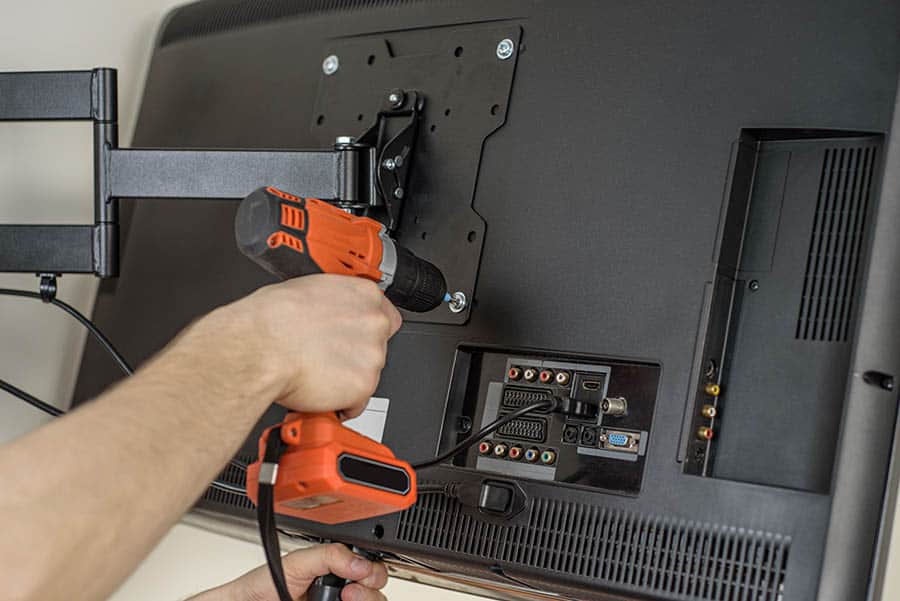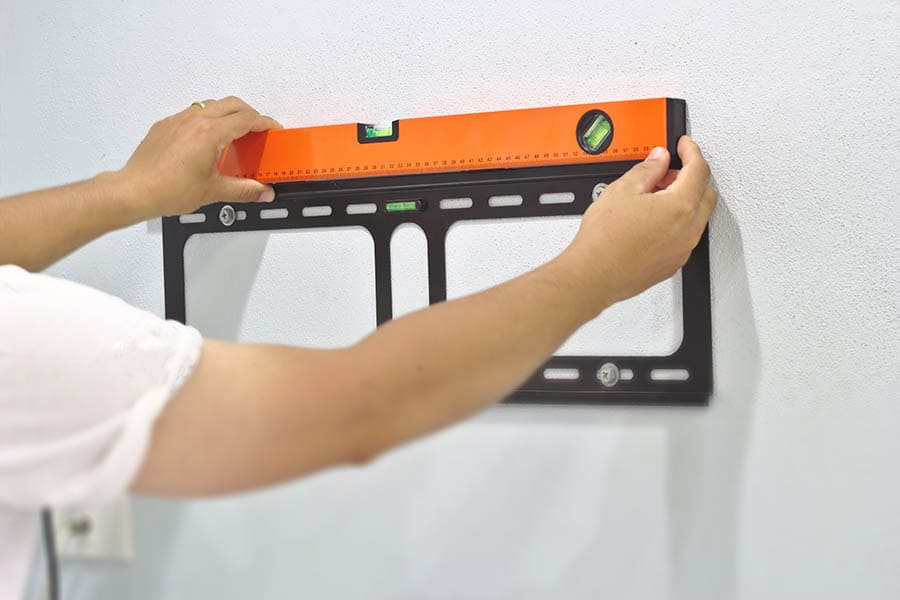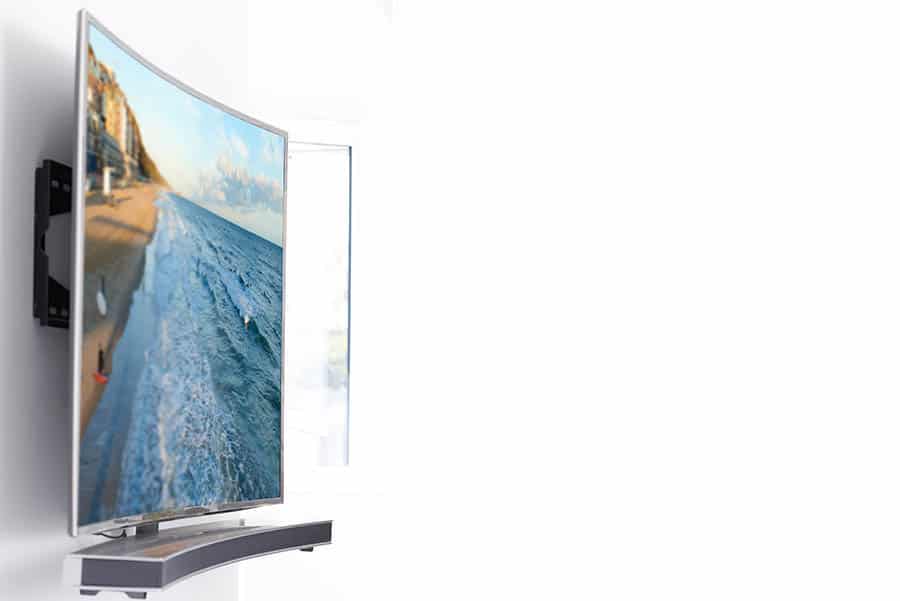Although curved TVs are said to be dead by many, they’re still being produced and are relatively popular amongst those looking for a good home TV setup.
For most people, they’ll want to use their curved TV on a well made stand. But in some cases, you may also want to mount a curved television on the wall. Due to their design, it’s reasonable to think that this may be more difficult than with a flat TV. But just how difficult is it do this?
Can you mount a curved TV?
The answer is that yes, you can mount a curved television on the wall in your home. These kinds of TVs are only slightly curved, which means that it’s not actually that much different than putting a flat television on the wall.
They’re actually very similar to flat televisions, and there isn’t much difference between the two (I’ll get more onto the comparison in a minute). To put things in perspective, you’d need around 18 curved televisions to make a circle, so they’re only very slightly curved.
So whilst they are curved, they tend to be very easy to mount – just like normal televisions. Here’s a quick guide to show you the basic steps of TV mounting.
How to Mount a Curved TV
The good news is that you can still use a VESA mount to get your television up on the wall, even if it is curved. VESA is simply the standard that is used for the position and size of the holes that are on the back of your television. Here, you can see the four holes fit perfectly for the VESA mount;

If your mount is VESA compatible, then you will be able to use any VESA mount for your television. Here’s how you’d go about fitting it to your wall.
Step 1 – Find the Studs

You don’t want to put the wall mount anywhere in the wall – you want to find the studs. These are essentially just the vertical frames of the building. The best way to find them is with a stud finder. However, you can find studs without a stud finder.
Step 2 – Find and drill the holes

Next, you’ll want to place your mount up against the wall where the studs are. Use the mount to mark circles where you’ll need to make a hole. Then, go ahead and use a power drill to make the holes.
Step 3 – Attach the wall mount to the wall

Now you’ve got the holes drilled, you can attach the wall mount to the wall itself. You can use the screws that came with your mount to make sure that it’s securely set up.
Step 4 – Put the TV up

Next, you’ll want to place the mounting plate to the back of your curved TV. Then, you can go ahead and connect the mounting plate to the wall mount. It should be pretty easy to do this, and a full description will be in your instructions.
And that’s it! It’s actually pretty easy for you to wall mount a curved or flat television. But are they worth it?
Are there any benefits of opting for a curved TV?
If you haven’t decided whether a curved TV is right for you or not, then there are a few different benefits to them. Not everyone agrees that these are 100% true, so it’s worth doing a little more research on your own first.
Although there have been a fair amount of curved televisions sold worldwide, there are some people who consider it to be a failure. It’s fair to say that since 2013 and their introduction to the market, they have become decreasingly popular in the last few years.
Why some consider the curved TV to be a failure
Critics of the curved TV will say that the few benefits that it has over a flat TV are dramatically overstated. And instead, there are actually more downsides of opting for a curved TV than there are upsides.
The most common criticism of curved televisions is that they’re not great for watching a different angles. Whilst if you’re directly in front of the TV they’re fine, when trying to watch at a different viewing angle, it’s difficult to really see the screen.
It’s also commonly said that they just don’t translate to smaller TVs that well. Having a curved massive screen in your local IMAX cinema might be great, but when you reduce it down to a 40 inch TV, it really doesn’t have the same effect.
Another criticism of curved TVs is that they can make any sort of light reflecting of the screen worse than with a flat TV. They often need to be surrounded by the right ambient lighting to ensure that you can’t see any reflection.
Whilst they are still sold worldwide and brands like Samsung are bringing out new models, they’re not that popular anymore. We’ll see over the next few years whether they get back into the market or they go the same way as fads like the 3D TV – extinct.
Conclusion
In conclusion, whether you’re for or against curved televisions, they’re not any more difficult to mount than a flat TV. So, this shouldn’t be a factor in your decision if you’re searching for a new one.